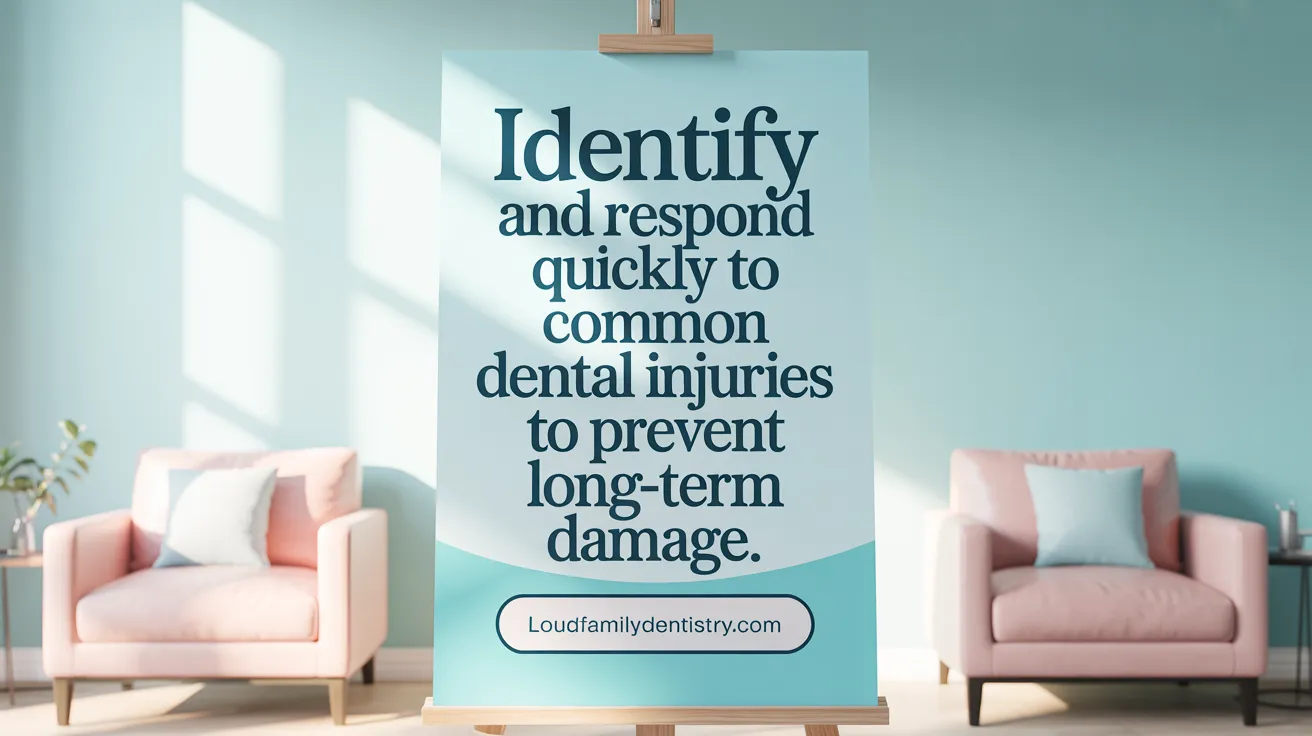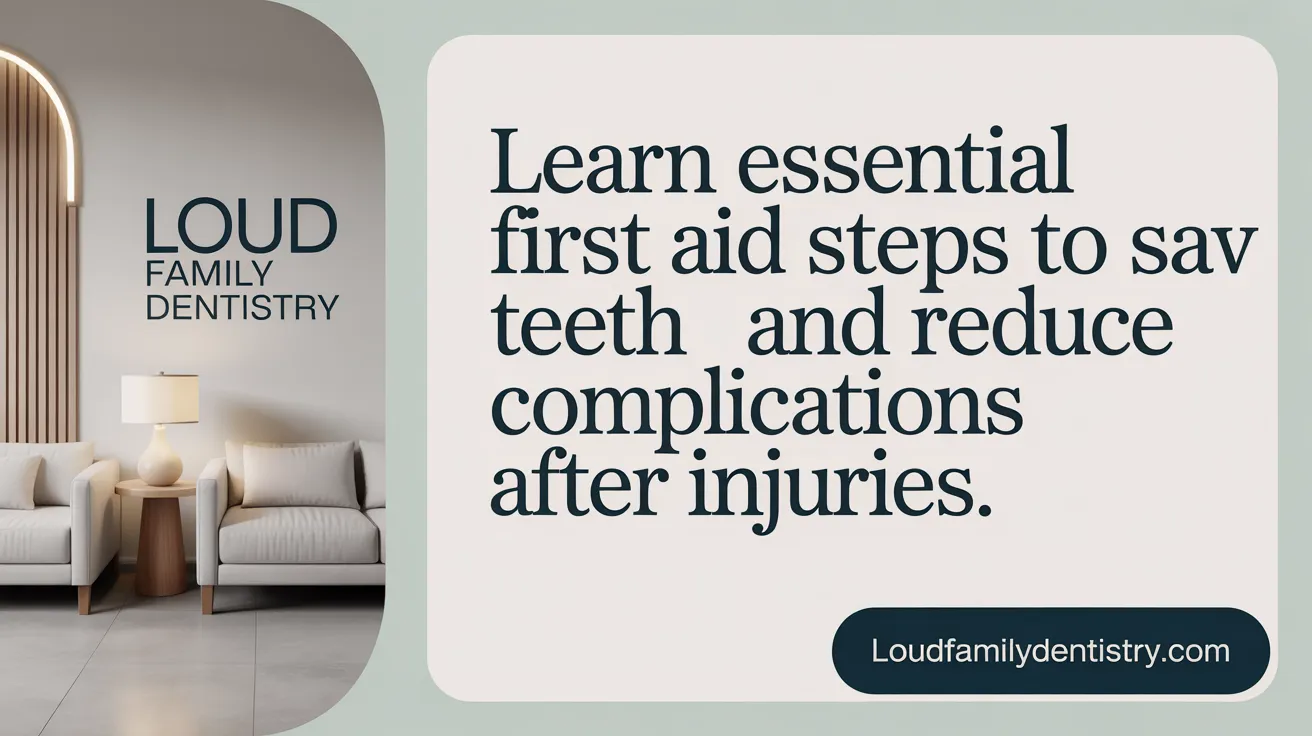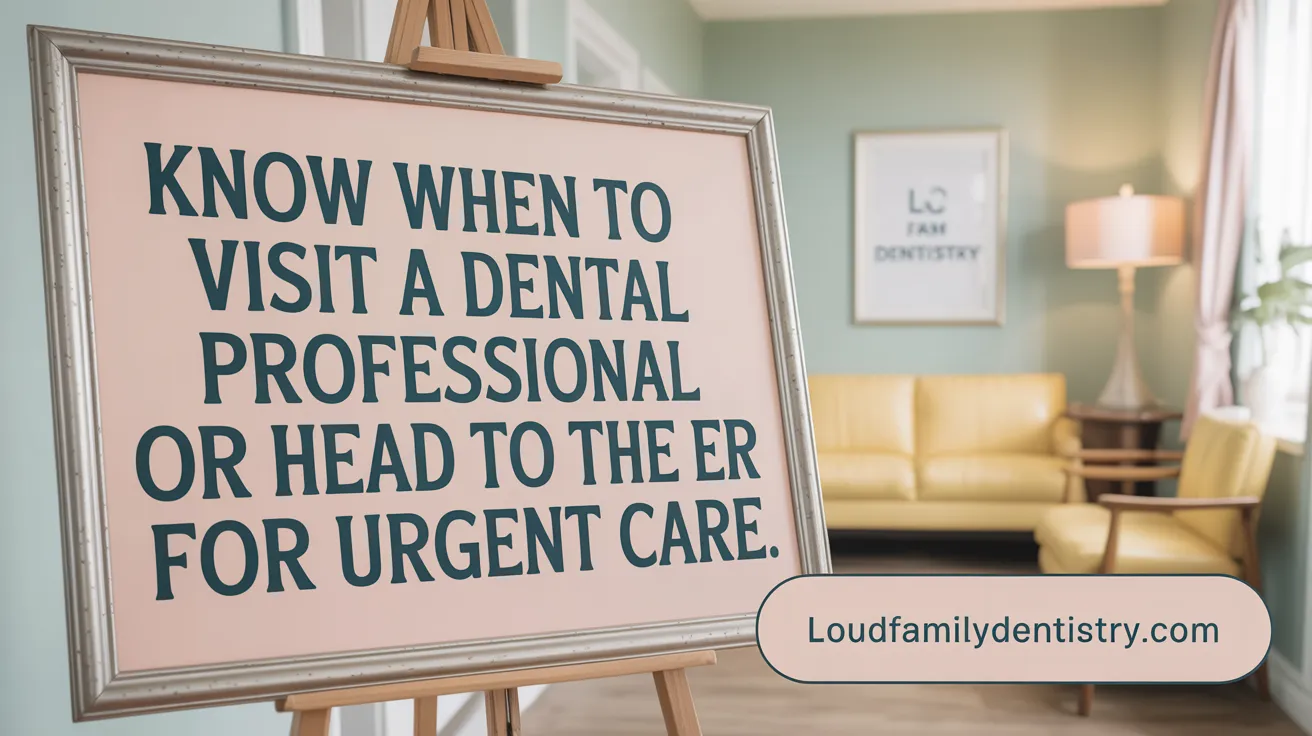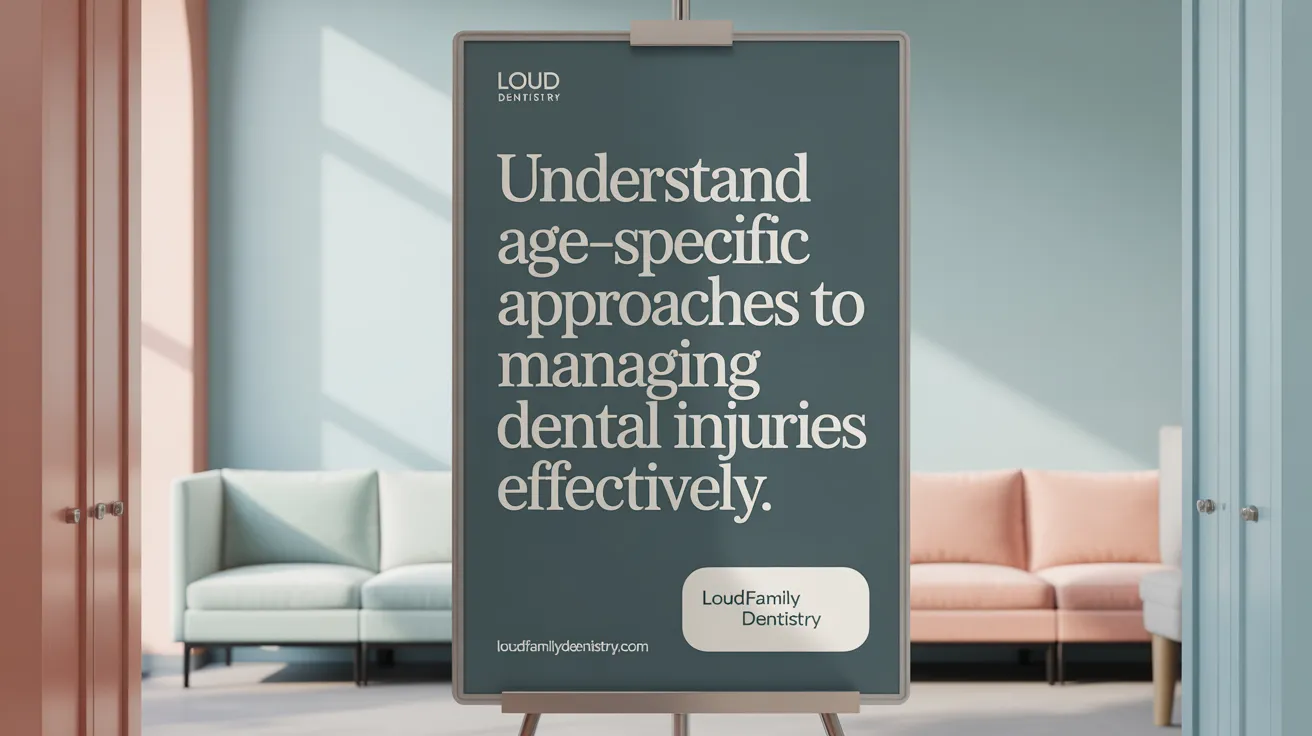Understanding Dental Emergencies
Dental injuries can occur suddenly and range from minor chips to severe trauma that threatens the survival of teeth and the health of surrounding tissues. Recognizing when a dental injury requires emergency intervention is critical to prevent permanent damage, control infection, and alleviate severe pain. This article outlines key types of dental injuries, immediate first aid responses, and how to determine when to seek urgent professional care for dental emergencies.
Common Types of Dental Injuries and Their Immediate Implications

What constitutes a dental emergency?
A dental emergency is a sudden condition involving severe pain, injury, or infection that requires immediate dental attention to alleviate pain, control bleeding, or prevent permanent damage. Quick response is crucial to avoid complications like infection spread, tooth loss, or lasting damage.
What are common types of dental emergencies?
Dental emergencies can be categorized into several types based on their cause and severity:
-
Traumatic Dental Injuries: These include knocked-out (avulsed) teeth, badly cracked or fractured teeth, and luxated (dislodged or partially displaced) teeth. Such injuries commonly arise from falls, sports, accidents, or violence. Immediate care, such as reinserting a knocked-out tooth within one hour, can significantly improve outcomes.
-
Infectious Emergencies: Dental abscesses fall into this category, caused by infections in the tooth or surrounding gums. Abscesses produce severe pain, swelling, and may spread infection if untreated. Prompt treatment is vital to prevent life-threatening complications.
-
Soft Tissue and Facial Trauma: Injuries to lips, cheeks, gums, tongue, or facial bones often accompany dental trauma. Managing bleeding with pressure and seeking urgent care when bleeding is uncontrolled or when fractures occur is essential.
-
Post-Procedural Emergencies: These arise after dental procedures, such as excessive bleeding following extractions or developing alveolar osteitis ('dry socket'). These conditions require specific recognition and timely dental intervention.
Understanding these categories helps prioritize emergency care and guides appropriate initial action to protect oral health and overall wellbeing.
First Aid and Immediate Management of Dental Injuries

How should a knocked-out tooth be handled initially?
A knocked-out permanent tooth requires swift and careful management to maximize the chances of saving it. First, hold the tooth by the crown—the part normally visible in the mouth—to avoid damaging the roots. Rinse the tooth gently with milk, saline, or clean water to remove dirt, but do not scrub or touch the root. If possible, reinsert the tooth into its socket within 30 to 60 minutes immediately after rinsing. If reinsertion is not feasible, store the tooth in a suitable medium such as milk, saliva, or a balanced salt solution to keep it moist until dental care is available.
What are the first aid steps for controlling bleeding and pain?
To control bleeding after a dental injury, apply gentle but firm pressure to the affected area using gauze or a moistened tea bag for about 10 to 20 minutes. This helps the blood to clot effectively. For swelling, cold compresses placed externally on the cheek can reduce inflammation and discomfort. Pain relief can be managed with over-the-counter medications like ibuprofen or acetaminophen. It is advisable to avoid aspirin as it thins the blood and may worsen bleeding.
How should soft tissue injuries in the mouth be managed initially?
Soft tissue injuries, including cuts or lacerations on the lips, tongue, or cheeks, should be treated by rinsing the mouth gently with warm salt water to clean the area. Apply pressure with gauze to control bleeding, and use cold compresses externally to lessen swelling. If bleeding does not stop after 10 to 15 minutes of applied pressure, seek urgent medical care promptly to prevent further complications.
Proper cleaning of broken tooth fragments
If a tooth breaks or chips, collect any fragments you can find and rinse them gently with warm water. Do not scrub or use harsh chemicals. Rinsing the mouth gently with warm water also helps clean the area. Control any bleeding with gauze, and protect sharp edges temporarily to avoid injury until professional dental treatment can be obtained. Refer to management of broken teeth and dental emergencies for further care.
Preservation of avulsed teeth
Appropriate preservation of an avulsed (knocked-out) tooth is critical. Ideal media include milk, balanced salt solutions, or saliva to prevent the tooth from drying out. Avoid storing the tooth in plain water, which can damage root cells. Prompt transport to a dental professional within the golden hour — 30 to 60 minutes — improves the likelihood of successful reimplantation as emphasized in dental trauma management guides.
Use of cold compresses and over-the-counter pain relief
Cold compresses applied externally to the injured area help reduce pain and minimize swelling following dental trauma. Over-the-counter pain medications such as ibuprofen or acetaminophen are recommended to manage discomfort. Avoid aspirin as it may exacerbate bleeding issues. See first aid for dental emergencies for additional guidance.
By following these first aid steps promptly and carefully, the severity of dental injuries can be minimized, and the chances for successful treatment and recovery greatly improved.
When to Seek Emergency Dental Care Versus Visiting the Emergency Room

Criteria for emergency dental care
Emergency dental care is needed when you experience severe tooth pain, a knocked-out tooth, a badly cracked or displaced tooth, dental abscesses, or uncontrollable bleeding localized in the mouth. Immediate dental attention can save teeth and prevent complications. If a tooth is knocked out, it should ideally be replanted within 30 to 60 minutes for the best chance of preservation. Emergency dentists provide pain relief, stabilize dental injuries, and perform diagnostic imaging to tailor further treatment.
Situations warranting ER visit
You should visit the emergency room if the injury includes severe facial trauma such as jaw fractures or dislocations, uncontrolled bleeding that cannot be stopped with pressure, difficulty breathing or swallowing, or signs of systemic infection like high fever and swelling that obstructs airways. Life-threatening conditions require prompt hospital care, as emergency rooms can manage airway safety and major injuries beyond dental repairs.
Distinguishing life-threatening injuries
Dental problems that affect breathing, cause severe bleeding, or involve broken facial bones are considered life-threatening. Other red flags include head, neck, or spinal injury symptoms like unconsciousness, confusion, severe pain, or seizures. These symptoms mandate calling emergency services or going directly to an ER rather than a dental office.
Availability of emergency dentists
Many dental offices offer after-hours, weekend, or on-call emergency services to manage urgent dental cases. Patients should first try contacting their own dentist in an emergency for instructions. If the dentist is unavailable, the next step can be an urgent care center or the ER for immediate symptom control.
Role of urgent care centers
Urgent care centers can provide pain relief and initial evaluation when the dentist is unreachable. However, they generally lack the capability for dental restorations or tooth reimplantation. For definitive dental treatments, patients will need to see a dental specialist.
| Situation | Recommended Action | Details |
|---|---|---|
| Knocked-out tooth (no life-threatening signs) | Emergency dentist | Reinsert tooth within 1 hour or store in milk, seek prompt dental care |
| Severe facial trauma or jaw fracture | Emergency room | ER handles fractures, airway management, and severe bleeding |
| Severe uncontrolled oral bleeding | Emergency room | Requires immediate medical attention to stop bleeding |
| Severe pain without airway compromise | Emergency dentist | Pain relief, imaging, stabilization |
| Dentist unavailable for urgent dental issue | Urgent care or ER | Symptom management until dental care available |
Recognizing Signs Indicating Urgent Dental Intervention

What symptoms indicate the need for immediate dental care?
Immediate dental treatment is necessary if you experience severe and persistent tooth pain that doesn't improve with over-the-counter painkillers. Another critical sign is prolonged or uncontrolled bleeding from the mouth or gums that doesn't stop after applying pressure for 10 to 20 minutes. Mobility or displacement of teeth, such as teeth that are loose, cracked, or knocked out, requires quick care to prevent permanent loss. Swelling in the face, jaw, or gums accompanied by fever often signals infection or abscess formation, which can spread if untreated. Difficulty breathing or swallowing is a serious symptom that may indicate airway obstruction from swelling or infection and demands urgent attention.
When is facial trauma serious enough to require emergency attention?
Facial trauma becomes an emergency when there are signs of broken facial bones or jaw dislocation. Heavy bleeding that cannot be controlled by pressure or appearance of numbness or tingling in the face suggests nerve injury and calls for immediate care. Vision problems or pain behind the eyes after trauma also warrant rapid evaluation. Additionally, if head, neck, or spinal injury signs such as confusion, vomiting, weakness, or difficulty breathing are present alongside facial injury, urgent emergency department assessment is vital.
Additional signs to watch for include:
- Severe soft tissue injuries with uncontrolled bleeding
- Persistent swelling or redness around teeth or gums
- Loose or shifting teeth following trauma
- Changes in bite alignment or difficulty opening the mouth
Recognizing these signs early and seeking prompt professional evaluation can prevent serious complications such as tooth loss, infection spread, and airway obstruction. In any severe trauma case, prioritizing airway safety and rapid assessment by specialists ensures the best outcomes.
Special Considerations for Handling and Treating Dental Trauma in Children and Adults

How do dental injuries differ between children and adults?
Dental injuries show distinct patterns in children versus adults. In children, dental trauma often results from falls, playground accidents, or sports, mostly affecting primary (baby) teeth. Importantly, baby teeth that are knocked out should not be replanted to avoid harming the underlying permanent teeth developing beneath. Conversely, adults face more complicated dental injuries frequently linked with broader facial trauma or orthopedic damage. These adult injuries often require more extensive medical and dental evaluation and treatment. For detailed information on dental trauma causes and management in adults please refer to the resource.
What aftercare and referral are important following dental trauma?
After providing immediate emergency dental care, it’s crucial to refer patients to oral and maxillofacial surgeons or specialized dental practitioners. Specialists handle advanced treatments such as tooth replantation, stabilization of dislodged teeth, and surgical repair of bone fractures. Alongside physical care, addressing the psychological impact is vital. Dental trauma can cause emotional distress; hence, managing patient expectations and offering reassurance are important for successful recovery. See dental trauma follow-up and emotional distress management for further guidance.
Additional precautions and prevention strategies
To reduce the risk of dental injuries, the use of custom-fitted mouthguards during sports and high-risk activities is strongly recommended for children and adults alike. These mouthguards provide effective protection against tooth fractures, displacements, and soft tissue injuries. Furthermore, educating families and patients on safety practices and regular dental check-ups helps prevent and promptly address dental trauma complications. For more information about preventive strategies for dental trauma and oral hygiene practices please consult the recommended resources.
Preventive Measures and Long-Term Care After a Dental Emergency
What is the importance of prompt treatment and follow-up in dental emergencies?
Prompt treatment is vital in dental emergencies to prevent infection, reduce pain, and increase the likelihood of saving injured teeth. For example, re-inserting a knocked-out tooth within one hour significantly improves its survival chances. Early intervention minimizes complications such as tooth loss, root resorption, and the need for complex dental procedures.
Follow-up care is equally essential. Patients require monitoring through clinical examinations and radiographs over weeks to years to ensure proper healing and to detect complications early. This includes assessing pulp vitality, tooth stability, and signs of infection or ankylosis. Timely follow-up allows for interventions like splinting adjustments or additional treatments, improving long-term outcomes. More on dental trauma follow-up.
How can dental emergencies be prevented and prepared for?
Prevention strategies focus on reducing the risk of dental trauma:
- Wearing custom-fitted mouthguards during contact sports to protect teeth and soft tissues.
- Maintaining good oral hygiene to prevent infections that could lead to emergency dental situations.
- Avoiding chewing hard objects like ice or pens that can fracture teeth.
- Using seat belts and helmets to prevent injuries from accidents.
Preparation for emergencies involves having a dental first aid kit that includes sterile gauze, dental floss, pain relievers, a container for knocked-out teeth, and contact information for emergency dental care. Knowing immediate steps—such as controlling bleeding, preserving avulsed teeth in milk or saline, and managing pain—can significantly improve recovery chances.
Implementing these preventive and preparedness measures alongside prompt professional treatment and diligent follow-up care ensures better prognosis and preserves oral health after dental emergencies.
Effective Management of Dental Injuries Saves Teeth and Prevents Complications
Dental injuries require swift recognition and appropriate first aid measures to optimize recovery and minimize complications. Knowing when to seek emergency dental care versus hospital treatment can ensure timely and effective intervention. Preventative strategies and preparedness play a crucial role in reducing the frequency and severity of dental injuries. Follow-up care is essential for monitoring healing and ensuring the long-term health of affected teeth and surrounding tissues. By understanding how to handle dental emergencies properly, patients and caregivers can contribute significantly to positive outcomes and preservation of natural teeth.
